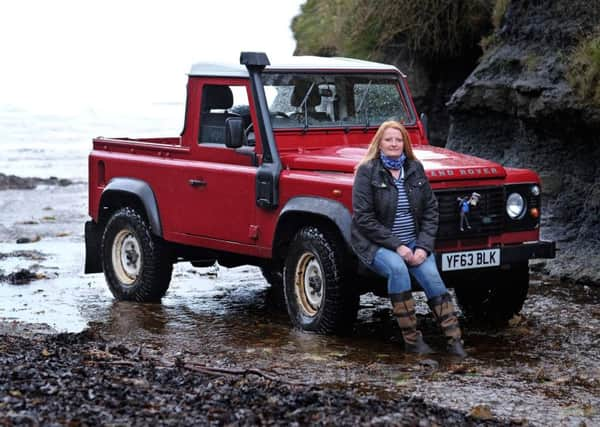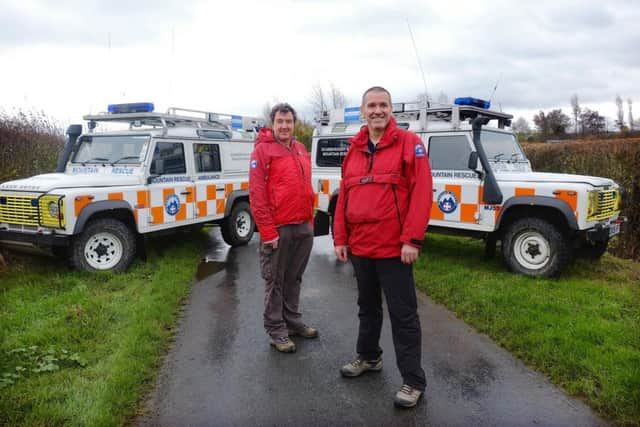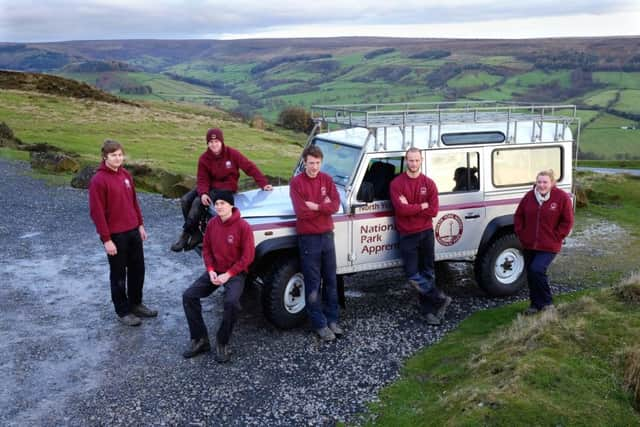Me and my Land Rover: Meet the Brits who fell in love with their 4x4


It may have begun life as a sketch in the sands of a North Wales beach - but the angular silhouette of the Land Rover Defender has become an intrinsic element of the Yorkshire landscape.
The man who drew that sketch in 1947 was Maurice Wilks, at the time the chief designer for the Rover Company.
Advertisement
Hide AdAdvertisement
Hide AdThe Land Rover was his answer to the American Jeep, and was designed to be rugged, reliable and able to tackle difficult terrain with ease.


Entering production in 1948 as the Series I, the car we today know as the Defender is available in short- and long-wheelbase guises - 90 and 110, respectively - and has been produced non-stop since then with very few major updates and modernisations, maintaining a pared-back, utilitarian motoring experience in an age of increasing disconnection between car and driver.
While it has indeed gone on to see service in every conflict Britain has been involved in since its introduction, the Defender’s reach has extended far past its military roots, seeing use in all walks of life. This becomes very apparent in Yorkshire’s vast, untouched countryside, where Defenders are as common a sight as the livestock they transport and the green fields they traverse.
In the 67 years since the Series I Land Rover was unveiled on April 30, 1948 at the Amsterdam Motor Show, production has continued non-stop through 14 different Prime Ministers, two monarchs, the start and end of the Cold War and 17 Summer Olympic Games.
Advertisement
Hide AdAdvertisement
Hide AdMeanwhile, the Land Rover company itself has introduced a variety of more luxury-orientated models, entered a partnership with Jaguar, been briefly part of the Ford marque and then bought by Indian giant Tata.


While it may seem like nothing could end this extraordinary run, Land Rover announced in October 2013 that increasingly stringent vehicle emissions and safety regulations would bring about an end to production of the Defender and the last one rolled of the prodction line today.
Although a replacement is in the pipeline, promising a modernised Defender experience, there is concern amongst current owners that it will be watered down and fail to offer the same rugged appeal as the original.
David Edwards and Ian Hugill, Incident Controllers, Scarborough and Ryedale Mountain Rescue Team. Two Defender 110s outfitted with medical and communications equipment.
Advertisement
Hide AdAdvertisement
Hide AdWhen this voluntary service was founded in 1965, its members knew there was only one vehicle up to the job of transporting them, their equipment and patients across some of North Yorkshire’s most inhospitable landscapes.


Fifty years ago, volunteers used their personal Land Rovers on rescue missions. Now, the team deploys two modern Defender 110s outfitted with state-of-the-art equipment, but the go-anywhere ability of the Land Rover has remained a key part of their operation.
Incident controller David Edwards lauds the Defender’s ability over rugged terrain, saying: “If an ambulance is struggling to get to a remote property, the Yorkshire Ambulance Service can call us to go with the Land Rovers to get to the location.”
It’s not only rural areas in which the Defenders excel, however: Ian Hugill recalls an incident during the flash flooding of Filey in 2007, when a woman in labour was driven through the floodwaters by the Mountain Rescue Team’s Land Rovers; an ordinary ambulance was unable to reach her.
Advertisement
Hide AdAdvertisement
Hide AdTo find out more about the work of the SRMRT, visit srmrt.org.uk


David Chalmers, photographer.
Defender 90 Hard Top
Scarborough-based commercial photographer David Chalmers requires a vehicle capable of getting him and his equipment to remote shoot locations, so naturally, the Defender was his go-to car.
Now on his third Land Rover, and the second from the fabled Defender line, he praises his car’s cavernous loadspace: “It’s really good for carrying all my cases, I can get lighting equipment, camera gear, tripods in it”.
Although he admits that it takes time to get to love the Defender and its unique utilitarian charm, David’s affinity with the vehicle stretches past the average user’s – he spent three months stripping down and rebuilding his previous car with the help of a Land Rover specialist, learning basic mechanical skills along the way. That car is now gone and replaced with a more up-to-date model, but the draw remains the same: “It’s not like a normal car; it’s got a certain character, which I love.”
Advertisement
Hide AdAdvertisement
Hide AdTo see examples of David’s work, visit davidchalmersphotography.com
Steve Young, Apprenticeship Supervisor, North York Moors National Park. Defender 110 Station Wagon.
The men and women in charge of one of Britain’s biggest National Parks require a vehicle capable of tackling the iconic, deep purple heather moorland synonymous with the region. From the establishment of the National Park in 1952, the Defender and its predecessors have been the vehicles of choice for carrying out the upkeep of the area. The apprentices representing the next generation of park rangers favour the Defender for its towing capacity, ride height and versatility; not least the fact that the seven-seat Station Wagon can transport them all at once. Steve Young, Apprenticeship Supervisor for the southern area of the National Park, is despondent about the approaching termination of the Defender’s production: “It’s a great shame. We’ve used it for a long time and it will be disappointing to see it go.”
To find out more about the North York Moors National Park and the work of the park rangers, visit www.northyorkmoors.org.uk
Peter Mawson, rare breeds farmer. Defender 90 Hard Top.
Advertisement
Hide AdAdvertisement
Hide AdThe image that immediately comes to most people’s mind when they think of the Land Rover Defender’s iconic shape is of it on a remote farm track, with a healthy coating of mud and a woolly entourage in tow; for good reason – the vehicle has found much favour with farmers across the region.
Peter Mawson farms rare breeds of sheep and pig in High Farndale, in the North York Moors National Park. He favours the Defender for its dependability over the tough terrain: “I know that the four-wheel drive works, and here in the uplands that’s the most important feature.”
While his green Defender is the first 4x4 he’s owned, Peter has experience with Land Rovers of various vintages from his days in the RAF. With regards to the unseen replacement, he hopes for “better fuel economy, safety and comfort, while not looking amiss with a ewe in the back!”
To find out more about Peter’s produce, visit www.highfarndale.co.uk
Advertisement
Hide AdAdvertisement
Hide AdPeta and Andy Nugent, managers, YHA Boggle Hole. Defender 90 Pick Up.
Nobody you’ll read about in these pages relies on their Defender quite as much as Peta and Andy Nugent, managers of the Youth Hostel Association’s Boggle Hole site near Whitby.
Hidden away in a tiny bay on the weather-beaten North Sea coast, the only vehicular access to the hostel is down a rough slipway and over the rocky beach, often through the breaking waves. With nowhere to moor a boat, a Land Rover Defender is the only vehicle capable of bringing in the supplies necessary to keep the site up and running.
Peta and Andy have owned no less than nine Land Rovers since opening the site 24 years ago, beginning with a classic Series III and progressing through increasingly modern vehicles to the 2013 model they employ today. Peta says she’s devastated by the impending demise of the Defender in its current guise, hailing it as “one of the most important members of the Boggle crew”.
For more information on Peta and Andy’s location, visit yha.org.uk/hostel/boggle-hole